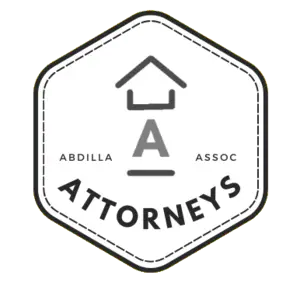
Are you struggling to keep up with your mortgage payments on your Illinois home? If so, you’re not alone. Financial setbacks can happen to anyone, and getting through those challenges can be overwhelming. If your lender is Truist Bank, and you are trying to figure out a way out of debt, this is the right article for learning how to do short sales.
Truist Bank, formed from the merger of BB&T and SunTrust in 2019, is a significant player in the financial industry. Truist offers a wide array of financial services, including traditional banking, home loans, and investment options. If you’re facing challenges with mortgage foreclosure, a short sale with Truist Bank can get you out of debt and let you move into somewhere more affordable.
This article will explain the process of short sale approval with Truist Bank, and continue through the steps to close the transaction.
Facing Foreclosure? Worried About How Much it Will Cost?
Table of Contents
No Up-Front Attorneys Fees for Short Sale Sellers
What are the Steps of the Truist Short Sale Process?
This part of the guide outlines the key steps involved in the Truist Bank Short Sale process:
1. Evaluate Your Options and Gather Documentation
First, you initiate the process by contacting Truist Bank’s Loss Mitigation Department. Discuss your financial hardship and explore all available options, including potential loan modification programs they offer. You might be able to keep your home. Therefore, try to exhaust this area before you move on.
Compile documents to strengthen your short sale request. You will need recent tax returns, paystubs, bank statements, a detailed hardship letter explaining your situation, and a current property appraisal obtained from a licensed appraiser. If you don’t have an appraisal, sometimes the Bank will pay for one. Truist has their own application too.
2. Use Your Team to Your Advantage
Partner with a lawyer or a real estate agent experienced in short sales, particularly familiar with Truist’s short sale program and guidelines. Their expertise can match your short sale package with Truist’s expectations and streamline the process. You should collaborate with your lawyer to assemble a comprehensive short sale package meeting Truist’s specific requirements.
3. Market the Property Effectively
Provide a brief analysis of the current market value of your property. You can include comparable recent sales of similar properties in your neighborhood. Some publicly available websites will give you this if you scroll down to the bottom, or any realtor can help you find it. We usually use a specific google search.
Nearly all short sale regulations prefer to see a property that has been listed for a public sale. At heart, the Bank would like to know that you gave people a chance to buy the property at full price before there was a short sale. You should attach a copy of your signed listing agreement with a licensed real estate agent. Good photos, honest disclosures and a reasonable price go a long way.
Your real estate agent will leverage their marketing expertise to attract qualified buyers for your property. The goal is to find a buyer willing to offer a price close to the market value, minimizing the shortfall for Truist on the loan.
4. The Short Sale Offer
Summarize the details of the short sale offer you’ve received, including the purchase price and any contingencies. If you used the Multiboard 7.0 Contract in Illinois, the offer itself does that for you. Later, upon receiving your package, Truist will review it and may request additional information. So, don’t be surprised with negotiations regarding the proposed short sale price. Moreover, there is also be a specific timeframe for Truist’s review and approval process. Normally, that timeframe is six weeks.
5. Closing the Sale:
Once a buyer and a purchase agreement are secured, the closing process finalizes the paperwork, transfers ownership of the property to the buyer, and settles any remaining loan balance with Truist. This might involve Truist approving a “short payoff” on your mortgage. Then, Truist gives explicit instructions on how to close the property. The mortgage company will tell you how much everyone can make on the transaction. Then, it will tell you when you can close the transaction. You will be told where to be and how to sign. Follow those instructions to the letter.
What are the Required Documents for a Truist Short Sale?

There are three set of these documents. First, we spoke about the Real Estate Offer, and we won’t go back into that one. The second document is a third party authorizatio. Finally, you’re looking at the mortgage assistance application.
The third-party Authorization just lets the bank talk to your financial team. Without it, there are federal laws that say nobody can work with someone on this loan unless they’re you. You need the team in place, so just fill out the document.
Finally, let’s get back to the mortgage assistance application. Filling out this form is one of the first things you should do if you’re having trouble paying your mortgage. It takes the bank forever to process it, so a head-start is helpful.
Powered By EmbedPress
Application includes:
- Borrower Information
- Property Information
- Hardship Information (How to Write a Hardship Letter Article)
- Current Borrower Assets (How to Fill Out the Asset Form)
- Borrower Income (Use your 1040/W2/Pay Stubs)
- Borrower Certification and Agreement (Your Signature)
Truist Bank says they will get in touch with you within 5 business days to confirm the documents were received and advise further what is the next thing to do.
How to Submit the Loan and Hardship Documents to Truist Bank?
- Mail: The loan company has a weird address, it’s VA_RVW-5113 PO Box 26150 Richmond VA 23260
- Fax: 877.589.0758
- Email: HomePreservationDocuments@Truist.com
How Do I Know if I am Eligible for a Short Sale with Truist?
Financial Hardship: A key requirement is experiencing a documented financial hardship that significantly reduces your income on an ongoing or permanent basis. This could be due to job loss, medical bills, divorce, or other unforeseen circumstances. Be prepared to provide documentation like paystubs, tax returns, or medical bills to verify your hardship during their review process. The more evidence you have, the greater chance that you can get some help. So, keep good records.
Truist requires a fully executed purchase agreement with a qualified buyer for your property before considering short sale approval. This is not common among banks, most banks will help you in a hypothetical. When you would ask them much you need to offer the home for sale, the Bank will tell you. Truist won’t. Conversely, they need you to bring an agreement outlining the proposed sale price and other terms of the transaction.
Consulting with a real estate attorney experienced in short sales within your state is highly recommended. Our legal expertise will guide you through the confusing process. We’ll also protect your rights and wallet. During the transaction, Truist will assign you a caseworker. In short, these people are called a “single point of contact” and they’re the person responsible for your loan getting worked out.
You should maintain an open communication with your Truist representative throughout the process. Doing so will allow you to receive updates, ask questions, and address any concerns that may arise. Therefore, specific requirements and timelines might vary depending on your unique circumstances and Truist’s latest guidelines. For the most up-to-date information, consult Truist’s website or contact their Loss Mitigation Department directly.
How Can We Assist You?
If you’re ready to explore your options with a Truist Bank short sale, let’s get started right now! You don’t have to go through this journey alone! Give me a call, and let’s discuss how we can work together to avoid foreclosure and make a fresh start. Whether you’re just starting to consider a short sale or you’re deep in the maze, I’m here to help. Contact me now, and take the first step towards easing your financial burdens. Let’s tackle this challenge together!
Facing Foreclosure? Worried About How Much it Will Cost?
